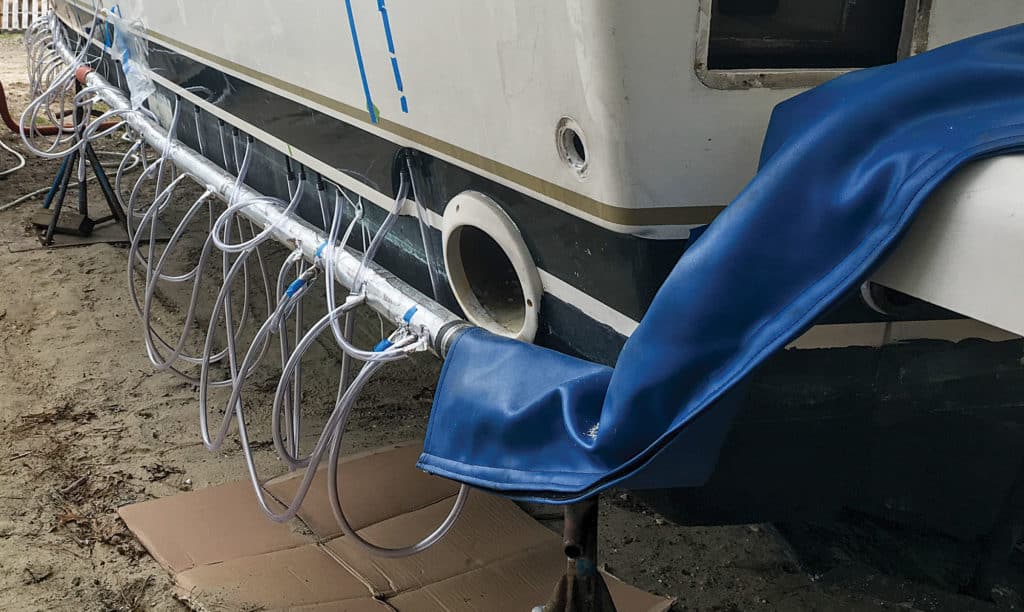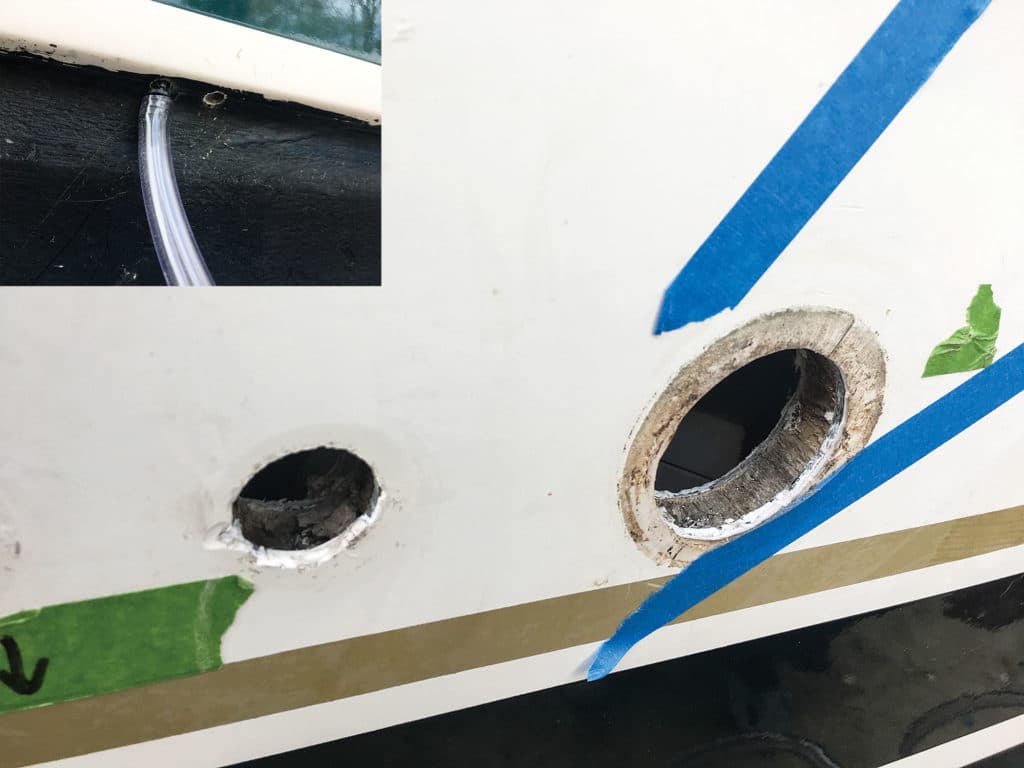
Tim put his meticulously maintained 10-year-old 36-foot sport-fisher up for sale last spring, and he soon found an eager buyer.
All that remained was for the boat to pass the survey, and the money — a down payment for his next boat — would be Tim’s to spend.
It failed. The surveyor discovered wet hull core with a moisture meter, and subsequently pulled hull fittings and portholes to physically reveal the wet balsa core. Tim returned the deposit to the buyer, who left angry. And he was stuck with $95,000 worth of unsaleable boat.
Learn About Different Hull Construction Types
Of course, he might have been able to sell the boat at a fire-sale price, but that would have meant walking away from many tens of thousands of dollars. Plus, “I wanted to sell the boat with a clean conscience,” Tim says. Traditional methods for dealing with wet core, including cutting, chiseling, replacing and reglassing, can also cost $40,000 to $50,000 or more. Not to mention the destructive damage such measures incur. Ugh!
How-To Drill Into and Install Accessories in Cored Hulls and Decks
Enter Dryboat. This Michigan-based moisture-remediation firm offers a mobile, nondestructive system to dry out cored fiberglass boats. According to company president Scott Richmond and developer Jon Bartnick, the process restores the affected areas to moisture levels acceptable by the builder. It is the only method they know that maintains the original design of the manufacturer, as well as the structural integrity of the affected vessel.

I saw it in action. In simple terms, the first step is to determine the extent of the moisture intrusion, using a moisture meter, and by mechanically removing fixtures and drilling exploratory holes. Next, a series of holes, sized to fit the application, is drilled. Into these are inserted hoses connected to the system, which is housed in a trailer and runs 24/7 until the boat is dry. All of this, plus the price, varies from job to job, depending on circumstances. For Tim’s boat, it took a month and “$1,000 worth of electricity, though the weather was very damp when we started, which lengthened the drying time,” Tim explains.
Read Next: Inspecting Your Boat’s Finish
Once the structure is dry, the holes need to be repaired and repainted or regelcoated. Tim, an auto-body man, did that work himself. And his business’s yard provided a space to run the equipment all the time without extra cost or complaints.
Tim’s Dryboat bill was $13,000. His boat passed the survey, and he sold it for $85,000. Subtracting the $15,000 he’d spent on remediation, that netted him $70,000. He was happy with that, given the expense of the alternatives, plus “I sold it with a clear conscience,” he says.
More Information
Dryboat – 855-379-2628; dryboat.com
Five Tips For Preventing Wet Core In Your Boat’s Structure
The boater in this story was caught by surprise. He didn’t realize his boat’s hull core was soaking wet until a marine surveyor turned it up during a pre-purchase inspection arranged by a potential buyer. To help avoid a similar situation yourself, take these five proactive and precautionary measures.
Learn the proper way to install accessories in cored hulls and decks. Whether you are adding a transducer, an antenna; replacing a hatch; or repairing a bowrail stanchion, the procedure for cutting and drilling holes in cored laminate are more complex than the techniques that apply to solid fiberglass. Basically, the cutout must be sealed as well as sealing the fitting
Pull through-hull fittings, engine mounting bolts and other penetrations on a periodic basis in order to inspect the core and make sure water is not getting in.
Reseal fittings and fixtures regularly. We can’t give you a specific time frame for this, because different caulks and different environmental conditions, result in the need to re-seal or re-caulk at different rates. Bottom line, caulk isn’t forever, so pull and reseal fuel fittings, engine bolts, antenna mounts, rail stanchions…..any fitting that passes through or into the core or that is fastened through or into the core—needs to be resealed regularly.
Buy a moisture meter and use it if you have a cored hull. These can be had for as little as $250. Of course, if you don’t want to buy a meter and learn how to use it, you can always hire a marine surveyor to check your boat’s core material for moisture periodically.
Inspect your boats finish for irregularities and flaws that might indicate structural concerns.









